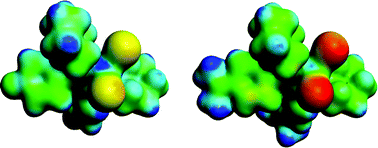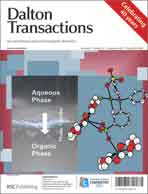α-diimine iron complexes have been suggested to catalyse polymerisationvia two distinct pathways, depending on the spin state of the iron complex. Here, we study a typical complex of this family, R′′[N,N]FeCl2, with [N,N] = Cy–N![[double bond, length as m-dash]](https://www.rsc.org/images/entities/char_e001.gif) CR′′–CR′′
CR′′–CR′′![[double bond, length as m-dash]](https://www.rsc.org/images/entities/char_e001.gif) N–Cy (Cy = cyclohexyl, R′′ = PhF (para-fluorophenyl), PhOMe (para-methoxyphenyl), PhNMe2 (para-dimethylaminophenyl). With R′′ = PhF, PhOMe, polymerisation proceeds as a catalytic chain transfer (CCT) mechanism, with R′′ = PhNMe2, the polymerisation follows an atom transfer radical polymerisation (ATRP) pathway. Contrary to previous suggestions, we show that the spin-states of the complexes involved are not affected by the R′′ group. Instead, the different behaviour arises from a subtle interplay between the electron-withdrawing or donating character of the reasonably distant phenyl substituent and the iron centre, and small but crucial differences in the reorganisation energies affected during the reactions.
N–Cy (Cy = cyclohexyl, R′′ = PhF (para-fluorophenyl), PhOMe (para-methoxyphenyl), PhNMe2 (para-dimethylaminophenyl). With R′′ = PhF, PhOMe, polymerisation proceeds as a catalytic chain transfer (CCT) mechanism, with R′′ = PhNMe2, the polymerisation follows an atom transfer radical polymerisation (ATRP) pathway. Contrary to previous suggestions, we show that the spin-states of the complexes involved are not affected by the R′′ group. Instead, the different behaviour arises from a subtle interplay between the electron-withdrawing or donating character of the reasonably distant phenyl substituent and the iron centre, and small but crucial differences in the reorganisation energies affected during the reactions.
![[double bond, length as m-dash]](https://www.rsc.org/images/entities/char_e001.gif) CR′′–CR′′
CR′′–CR′′![[double bond, length as m-dash]](https://www.rsc.org/images/entities/char_e001.gif) N–Cy (Cy =
N–Cy (Cy = 

 Please wait while we load your content...
Please wait while we load your content...